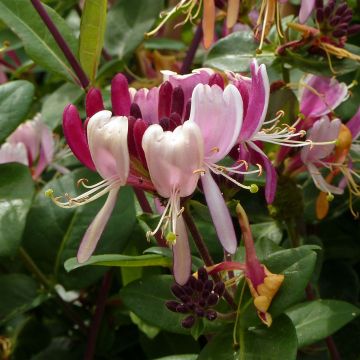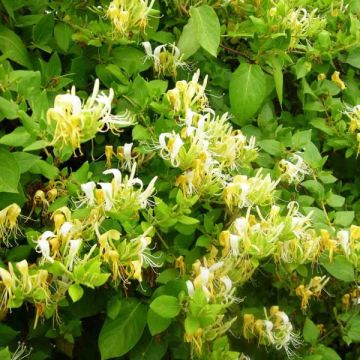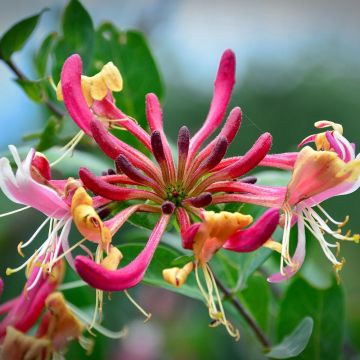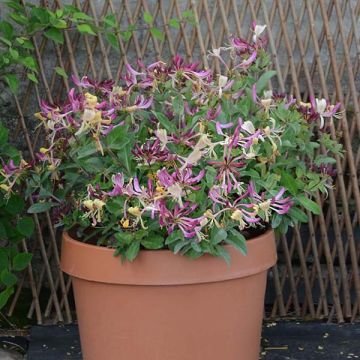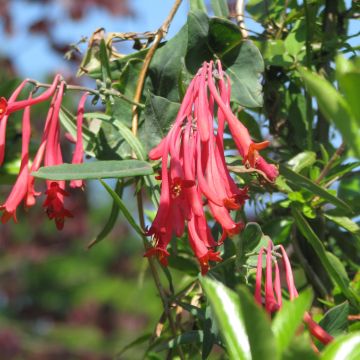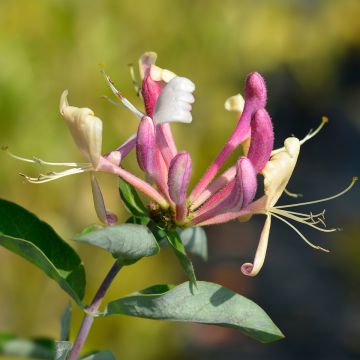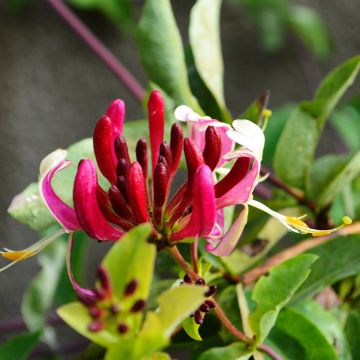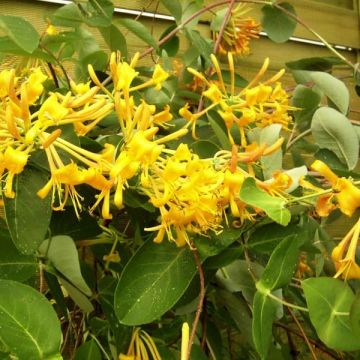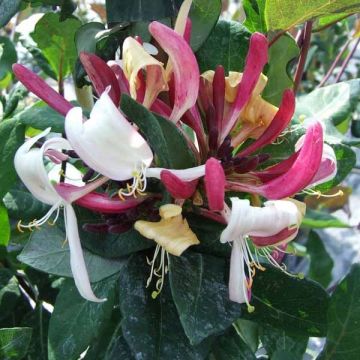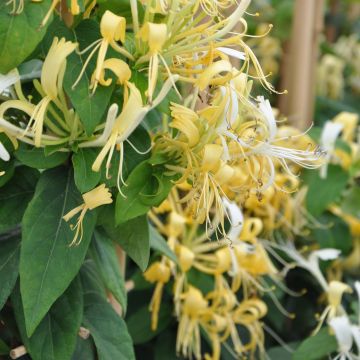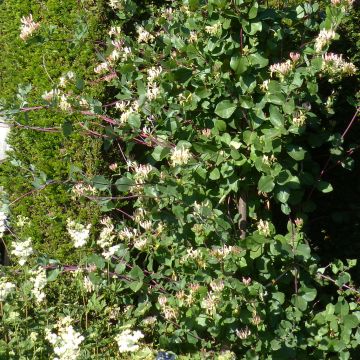

Lonicera x brownii - Scarlet Trumpet Honeysuckle
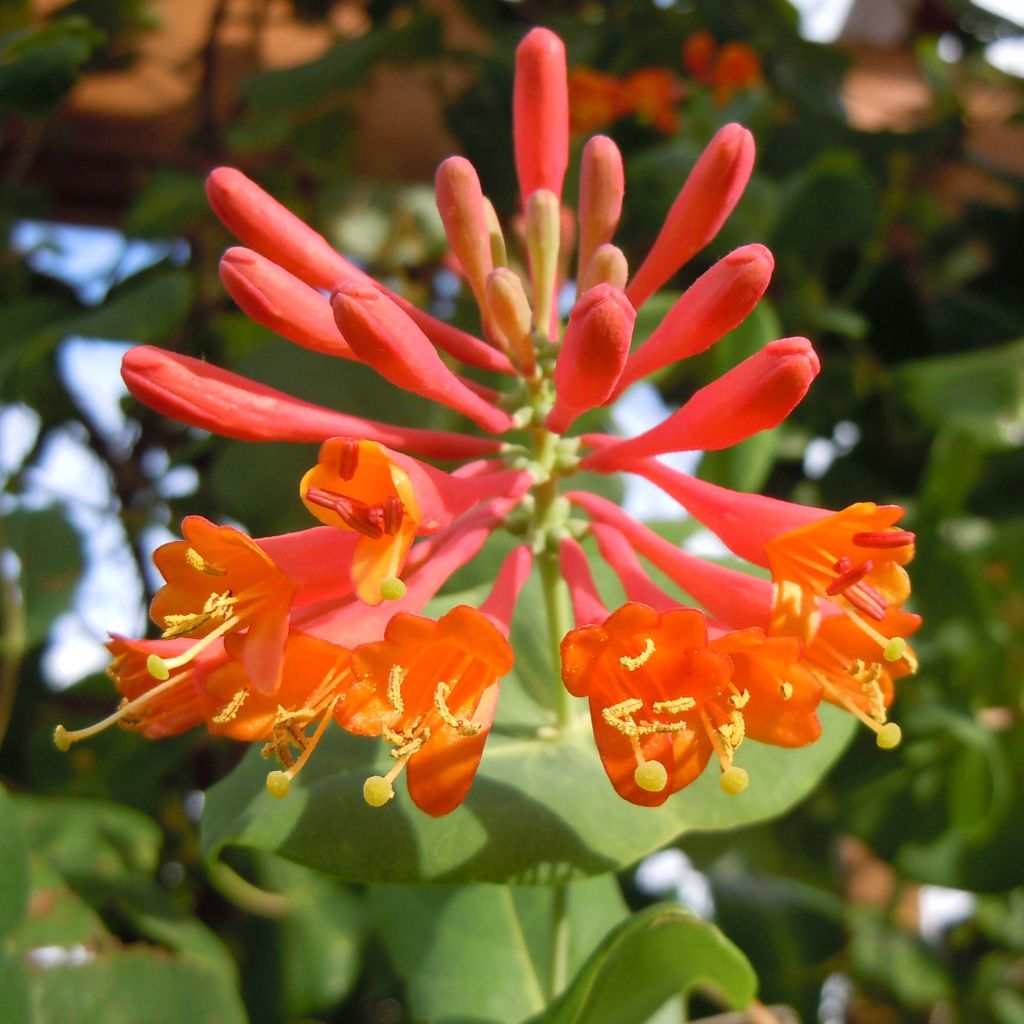

Lonicera x brownii - Scarlet Trumpet Honeysuckle
Lonicera x brownii - Scarlet Trumpet Honeysuckle
Lonicera x brownii
Scarlet Trumpet Honeysuckle, Brown's Honeysuckle
Special offer!
Receive a €20 voucher for any order over €90 (excluding delivery costs, credit notes, and plastic-free options)!
1- Add your favorite plants to your cart.
2- Once you have reached €90, confirm your order (you can even choose the delivery date!).
3- As soon as your order is shipped, you will receive an email containing your voucher code, valid for 3 months (90 days).
Your voucher is unique and can only be used once, for any order with a minimum value of €20, excluding delivery costs.
Can be combined with other current offers, non-divisible and non-refundable.
Why not try an alternative variety in stock?
View all →This plant carries a 6 months recovery warranty
More information
We guarantee the quality of our plants for a full growing cycle, and will replace at our expense any plant that fails to recover under normal climatic and planting conditions.
Would this plant suit my garden?
Set up your Plantfit profile →
Description
The Lonicera x brownii, also known as Brown's honeysuckle, is much less well-known than the famous 'Dropmore Scarlet' variety, which bears a strong resemblance. A hybrid of Lonicera sempervirens and L. hirsuta, it is a vigorous and hardy plant with foliage that persists to some extent in winter. It is appreciated for its striking summer flowering in shades of crimson red, coral, and orange, vibrant colours that make up for its lack of fragrance. These are perfect colours to brighten up semi-shaded areas where this climbing plant thrives.
Brown's honeysuckle belongs to the Caprifoliaceae family. It is a woody climbing plant with voluble stems that twine around any available support. Its growth is relatively fast, reaching approximately 3.50 metres (11 feet) in length or height and 1.50 metres (5 feet) in width, or even more depending on the growing conditions. The foliage remains evergreen in mild winter climates but is deciduous in colder regions. The slightly leathery elliptical leaves measuring 4 to 5 cm (2in) in length are bluish-green and arranged opposite each other on the stems. Flowering occurs in June-July. It forms clusters of numerous long tubular flowers that open into five lobes, with long stamens and an elongated pistil. The colour ranges from scarlet red to coral red to fiery orange. Nocturnal butterflies primarily pollinate them. The flowers are followed by small green berries that turn red and blackish-blue when ripe. These berries are sought after by birds but are toxic to humans.
Brown's honeysuckle looks stunning when trained on a trellis or wooden fence, combined with a pergola and a climbing rose with white or light yellow flowers, or planted behind trimmed boxwood. It also fits perfectly in a slightly wild hedge, with easy-to-care-for shrubs such as shrubby honeysuckles, botanical roses (Rosa moyesii, R. complicata, R. hugonis), or viburnums (snowball bush, wayfaring tree...). It can also be trained as a large bush by regular pruning in late winter.
Report an error about the product description
Lonicera x brownii - Scarlet Trumpet Honeysuckle in pictures
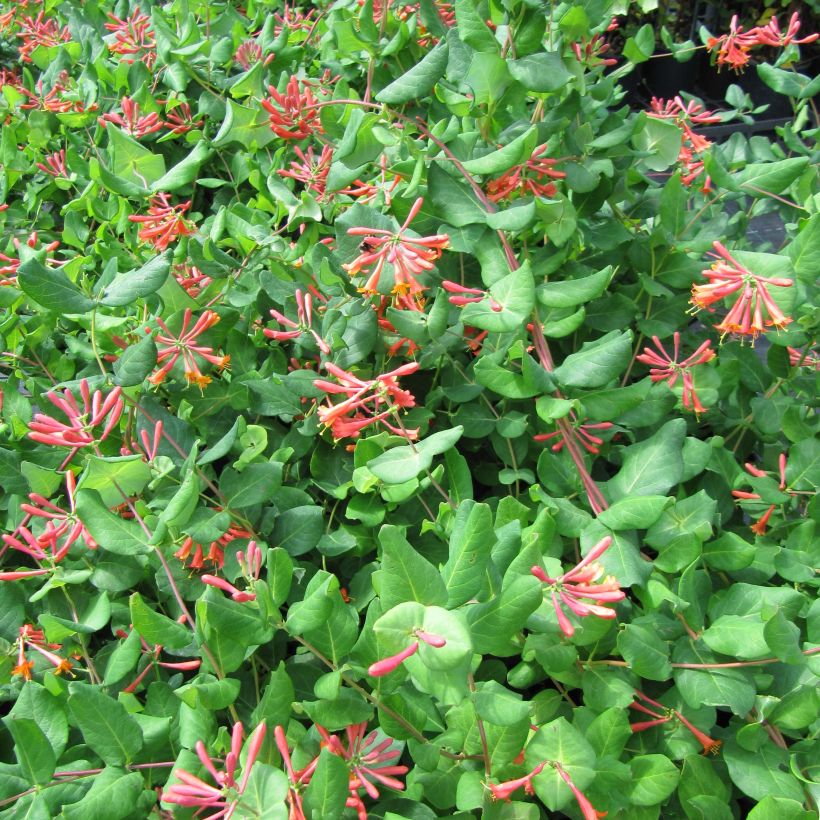

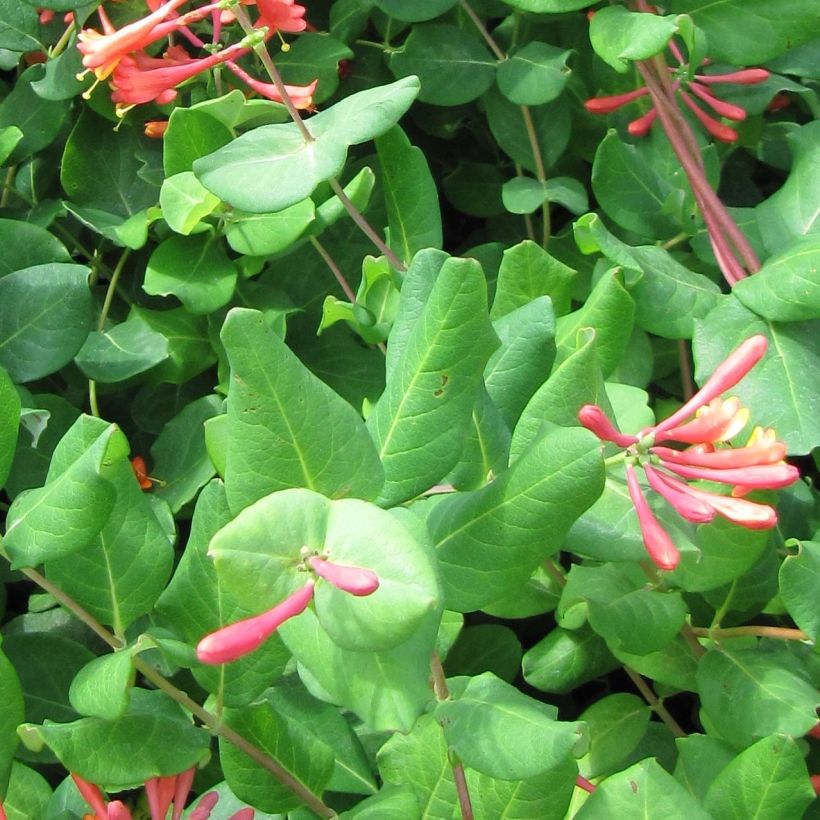

Plant habit
Flowering
Foliage
Botanical data
Lonicera
x brownii
Caprifoliaceae
Scarlet Trumpet Honeysuckle, Brown's Honeysuckle
Cultivar or hybrid
Other Honeysuckle
View all →Planting and care
Honeysuckles thrive in any good, deep, loose garden soil with little or no surface limestone and in a mildly sunny position. Carry out a cleaning pruning every year. However, it is possible to cut back an old plant severely to completely renew the structure. This will take one or two years. Honeysuckles are very hardy climbing plants, ideal for quickly dressing up a wall or an arbour. Provide them with a support and they'll hang on themselves. We love them for their long flowering period and wonderful fragrance. Our tip: place them near your terrace to take full advantage of their heady fragrance, which becomes stronger in the morning and evening. Their enemies are aphids, which can be controlled with pyrethrin, and powdery mildew. To limit the risk of disease, it's a good idea to air the honeysuckle branches well and place them in an unconfined spot. Preventive or curative treatments with a fungicide are effective.
Planting period
Intended location
Care
This item has not been reviewed yet - be the first to leave a review about it.
Haven't found what you were looking for?
Hardiness is the lowest winter temperature a plant can endure without suffering serious damage or even dying. However, hardiness is affected by location (a sheltered area, such as a patio), protection (winter cover) and soil type (hardiness is improved by well-drained soil).

Photo Sharing Terms & Conditions
In order to encourage gardeners to interact and share their experiences, Promesse de fleurs offers various media enabling content to be uploaded onto its Site - in particular via the ‘Photo sharing’ module.
The User agrees to refrain from:
- Posting any content that is illegal, prejudicial, insulting, racist, inciteful to hatred, revisionist, contrary to public decency, that infringes on privacy or on the privacy rights of third parties, in particular the publicity rights of persons and goods, intellectual property rights, or the right to privacy.
- Submitting content on behalf of a third party;
- Impersonate the identity of a third party and/or publish any personal information about a third party;
In general, the User undertakes to refrain from any unethical behaviour.
All Content (in particular text, comments, files, images, photos, videos, creative works, etc.), which may be subject to property or intellectual property rights, image or other private rights, shall remain the property of the User, subject to the limited rights granted by the terms of the licence granted by Promesse de fleurs as stated below. Users are at liberty to publish or not to publish such Content on the Site, notably via the ‘Photo Sharing’ facility, and accept that this Content shall be made public and freely accessible, notably on the Internet.
Users further acknowledge, undertake to have ,and guarantee that they hold all necessary rights and permissions to publish such material on the Site, in particular with regard to the legislation in force pertaining to any privacy, property, intellectual property, image, or contractual rights, or rights of any other nature. By publishing such Content on the Site, Users acknowledge accepting full liability as publishers of the Content within the meaning of the law, and grant Promesse de fleurs, free of charge, an inclusive, worldwide licence for the said Content for the entire duration of its publication, including all reproduction, representation, up/downloading, displaying, performing, transmission, and storage rights.
Users also grant permission for their name to be linked to the Content and accept that this link may not always be made available.
By engaging in posting material, Users consent to their Content becoming automatically accessible on the Internet, in particular on other sites and/or blogs and/or web pages of the Promesse de fleurs site, including in particular social pages and the Promesse de fleurs catalogue.
Users may secure the removal of entrusted content free of charge by issuing a simple request via our contact form.
The flowering period indicated on our website applies to countries and regions located in USDA zone 8 (France, the United Kingdom, Ireland, the Netherlands, etc.)
It will vary according to where you live:
- In zones 9 to 10 (Italy, Spain, Greece, etc.), flowering will occur about 2 to 4 weeks earlier.
- In zones 6 to 7 (Germany, Poland, Slovenia, and lower mountainous regions), flowering will be delayed by 2 to 3 weeks.
- In zone 5 (Central Europe, Scandinavia), blooming will be delayed by 3 to 5 weeks.
In temperate climates, pruning of spring-flowering shrubs (forsythia, spireas, etc.) should be done just after flowering.
Pruning of summer-flowering shrubs (Indian Lilac, Perovskia, etc.) can be done in winter or spring.
In cold regions as well as with frost-sensitive plants, avoid pruning too early when severe frosts may still occur.
The planting period indicated on our website applies to countries and regions located in USDA zone 8 (France, United Kingdom, Ireland, Netherlands).
It will vary according to where you live:
- In Mediterranean zones (Marseille, Madrid, Milan, etc.), autumn and winter are the best planting periods.
- In continental zones (Strasbourg, Munich, Vienna, etc.), delay planting by 2 to 3 weeks in spring and bring it forward by 2 to 4 weeks in autumn.
- In mountainous regions (the Alps, Pyrenees, Carpathians, etc.), it is best to plant in late spring (May-June) or late summer (August-September).
The harvesting period indicated on our website applies to countries and regions in USDA zone 8 (France, England, Ireland, the Netherlands).
In colder areas (Scandinavia, Poland, Austria...) fruit and vegetable harvests are likely to be delayed by 3-4 weeks.
In warmer areas (Italy, Spain, Greece, etc.), harvesting will probably take place earlier, depending on weather conditions.
The sowing periods indicated on our website apply to countries and regions within USDA Zone 8 (France, UK, Ireland, Netherlands).
In colder areas (Scandinavia, Poland, Austria...), delay any outdoor sowing by 3-4 weeks, or sow under glass.
In warmer climes (Italy, Spain, Greece, etc.), bring outdoor sowing forward by a few weeks.































